Famed Chinese Terracotta Warriors Could Have Been Made with the Help of the Greeks, Archaeologists Reveal
WESTERN EXPLORERS settled in China more than 1,500 years earlier than experts had believed, new research has revealed, after archaeologists found the famous Terracotta Warriors could have been made with the help of the Greeks. (ILLUSTRATION: Dan Snow presents the show about the Terracotta Warriors.)
The 8,000 statues, which guard the mausoleum of the First Emperor, are likely to have been made under the guidance of a European sculptor who worked with locals at the site and took influence from Ancient Greece.
An extensive study of sites in Xinjiang Province, China, have revealed European-specific mitochondrial DNA, suggesting Westerners travelled, settled and died there before and during the time of the First Emperor: 1,500 years earlier than currently accepted.

The discoveries have been hailed as “more important than anything in the last 40 years” surpassing even the discovery of the Terracotta Army itself in significance. They are thought to be the first documented contact between Western and Chinese civilizations ever recorded.
They came about during excavations across the site by Mausoleum archaeologists, which have now been documented for television by the National Geographic Channel and BBC.
Key findings include evidence that treasures in the tomb of the First Emperor were created with the help of the West, with inspiration from the statues of Ancient Greece.
The tomb complex itself was found to be “much bigger than first thought” — at 38 square miles, 200 times bigger than Egypt’s Valley of the Kings — with two roads out of it identified with drone technology.
Experts are particularly excited by the discovery of DNA suggesting Westerners lived in the area during the time of Qin Shi Huang, from 259 to 210 BC.
Dr Li Xiuzhen, Senior Archaeologist at the Emperor Qin Shihuang’s Mausoleum Site Museum, said: “We now have evidence that close contact existed between the First Emperor’s China and the West before the formal opening of the Silk Road. This is far earlier than we formerly thought.”
Evidence of that contact, experts believe, can be found in the style of the Terracotta Warriors, with “no tradition of building life-sized human statues” identified in China before then.
Prof Lukas Nickel, chair of Asian Art History at the University of Vienna, believes the tomb of the First Emperor was influenced by the arrival of Greek statues in Central Asia in the century following Alexander the Great.
“I imagine that a Greek sculptor may have been at the site to train the locals,” he said.
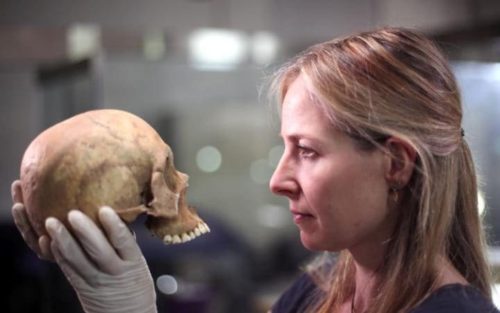
Dr Xiuzhen added: “We now think the Terracotta Army, the Acrobats and the bronze sculptures found on site have been inspired by ancient Greek sculptures and art”.
Prof Zhang Weixing, lead archaeologist at the tomb site, said: “The archaeological work undertaken here recently is more important than anything in the last 40 years.
“By systematically examining the First Emperor’s main tomb and subsidiary burials we have discovered something more important even than the Terracotta Army.”
Other findings from the site include the mutilated bones of young women, believed to be high ranking concubines, buried with precious jewellery made from pearls and gold.
The skull of a young man, believed to be Prince Fu Su, the First Emperor’s eldest son, was also found with a crossbow bolt embedded in it.
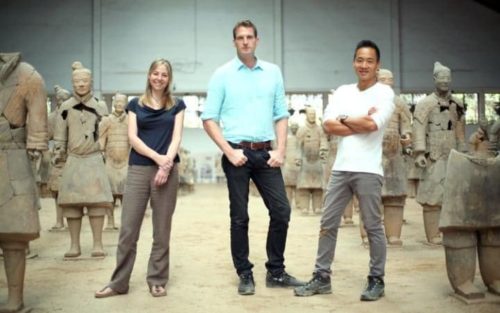
The full findings will be broadcast on the National Geographic Channel in the US, and one BBC Two this Sunday.
Rachel Morgan, commissioning editor for the BBC, said: “It is thrilling to think that these discoveries, using cutting-edge technologies and the forensic techniques of the 21st century, have the potential to alter what we know about the origin and formation of one of the world’s most powerful countries today and the relationships forged between ancient civilizations.”
Dan Snow, who presents the show, said: “It is extraordinary to think that history as we know it is changeable.”
The Greatest Tomb on Earth, a one-hour special hosted by Dan Snow, Dr Alice Roberts and Dr Albert Lin will air on BBC Two on Sunday, October 16 at 8pm.
* * *
Source: Telegraph


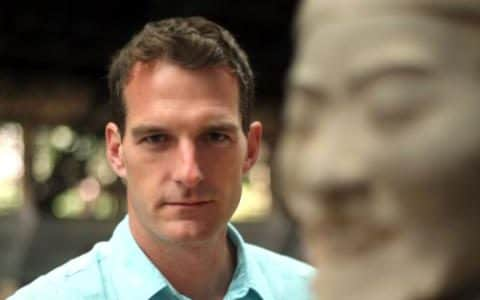


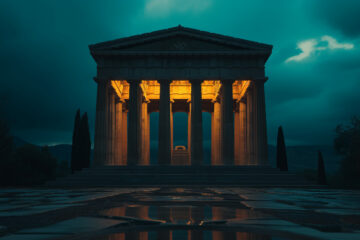
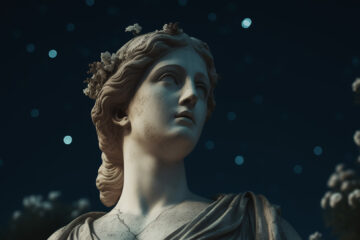
We gave China domestic horses; the wheel; bronze smithing; iron smithing, and probably masonry. Should our people be praised elevating the culture of others? Or should we stop this harebrained form of charity?!